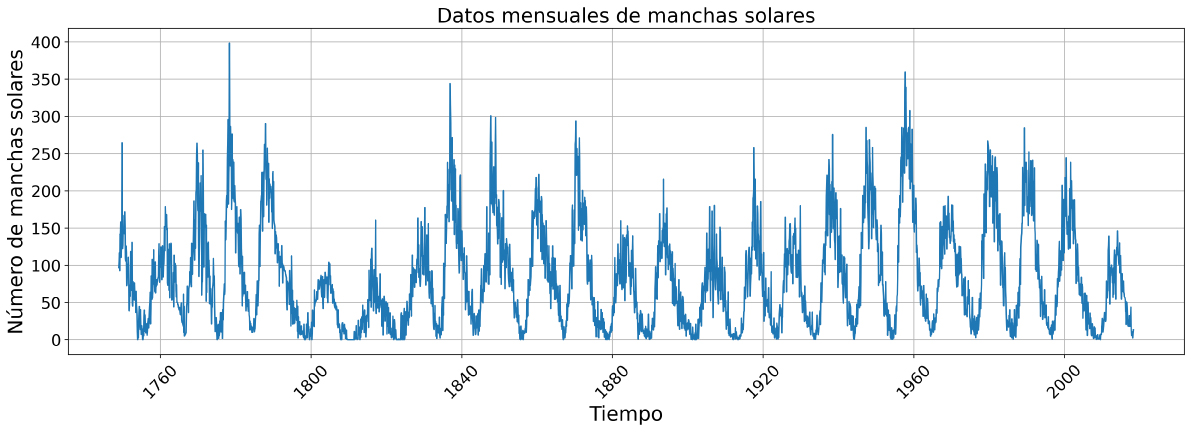Abstract
A study was conducted to predict the number of sunspots in Solar Cycle 25 using two models: a Long short-term memory (LSTM) recurrent neural network model and an autoregressive integrated moving average (ARIMA) model. The data used to train the models was obtained from the website of the World Data Center SILSO, Royal Observatory of Belgium in Brussels, from 1749 to 2018. Our LSTM model demonstrated exceptional performance (RMSE=3.6) compared to the best ARIMA model (RMSE=32.6). This showed that our LSTM model is significantly more accurate in terms of prediction, with an 89% improvement in RMSE reduction. According to our LSTM model, the maximum number of sunspots in Solar Cycle 25 is expected to occur in March 2025, reaching a maximum value of 182 sunspots. In contrast, the ARIMA model predicts that the maximum will be reached in December 2024, with a maximum value of 99 sunspots.
Keywords
References
Abdel-Rahman, H. I., Marzouk, B. A. (2018). Statistical method to predict the sunspots number. NRIAG Journal of Astronomy and Geophysics, 7(2), 175-179. https://doi.org/10.1016/j.nrjag.2018.08.001
Azcárate, T., Mendoza, B., Levi, J. (2016). Influence of geomagnetic activity and atmospheric pressure on human arterial pressure during the solar cycle 24. Advances in Space Research, 58(10), 2116-2125.
Benson, B., Pan, W. D., Prasad, A., Gary, G. A., Hu, Q. (2020). Forecasting Solar Cycle 25 Using Deep Neural Networks. Solar Physics, 295(5), 65. https://doi.org/10. 1007/s11207-020-01634-y
Box, G. E. P., Jenkins, G. M. (1976). Time series analysis: Forecasting and control. Retrieved February 28, 2023, from https://dialnet.unirioja.es/servlet/libro?codigo=375102
Cliver, E., Dietrich, W. (2013). The 1859 space weather event revisited: Limits of extreme activity. Journal of Space Weather and Space Climate, 3, 31–. https://doi.org/10. 1051/swsc/2013053
Dang, Y., Chen, Z., Li, H., Shu, H. (2022). A comparative study of non-deep learning, deep learning, and ensemble learning methods for sunspot number prediction. Applied Artificial Intelligence, 36(1), 2074129.
Dani, T., Sulistiani, S. (2019). Prediction of maximum amplitude of solar cycle 25 using machine learning. Journal of Physics: Conference Series, 1231(1), 012022.
Dickey, D. A., Fuller, W. A. (1979). Distribution of the estimators for autoregressive time series with a unit root. Journal of the American Statistical Association, 74(366a), 427-431. https://doi.org/10.1080/01621459.1979.10482531
Eddy, J. A. (1976). The maunder minimum. Science, 192(4245), 1189-1202. https://www.science. org/doi/10.1126/science.192.4245.1189
Goodfellow, I., Bengio, Y., Courville, A. (2016). Deep learning. MIT press.
Gour, P. S., Singh, N. P., Soni, S., Saini, S. M. (2021). Observation of coronal mass ejections in association with sun spot number and solar flares. IOP Conference Series: Materials Science and Engineering, 1120(1), 012020.
Han, Z., Zhao, J., Leung, H., Ma, K. F., Wang, W. (2019). A review of deep learning models for time series prediction. IEEE Sensors Journal, 21(6), 7833-7848.
Hathaway, D. H. (2015). The Solar Cycle [arXiv:1502.07020 [astro-ph]]. Living Reviews in Solar Physics, 12(1), 4. https://doi.org/10.1007/lrsp-2015-4
Hathaway, D. H., Wilson, R. M., Reichmann, E. J. (1999). A synthesis of solar cycle prediction techniques. Journal of Geophysical Research: Space Physics, 104, 22375-22388. https://doi.org/10.1029/1999JA900313
Hochreiter, S., Schmidhuber, J. (1997). Long short-term memory. Neural computation, 9, 1735-80. https://doi.org/10.1162/neco.1997.9.8.1735
Juckett, D. A., Rosenberg, B. (1993). Correlation of human longevity oscillations with sunspot cycles. Radiation Research, 133(3), 312-320.
Li, Q., Wan, M., Zeng, S.-G., Zheng, S., Deng, L.-H. (2021). Predicting the 25th solar cycle using deep learning methods based on sunspot area data. Research in Astronomy and Astrophysics, 21(7), 184.
Lütkepohl, H. (2005). New Introduction to Multiple Time Series Analysis. Springer. https://doi.org/10.1007/978-3-540-27752-1
Lybekk, B., Pedersen, A., Haaland, S., Svenes, K., Fazakerley, A. N., Masson, A., Taylor, M., Trotignon, J.-G. (2012). Solar cycle variations of the cluster spacecraft potential and its use for electron density estimations. Journal of Geophysical Research: Space Physics, 117(A1). Montgomery, D. C., Jennings, C. L., Kulahci, M. (2015). Introduction to time series analysis and forecasting. John Wiley & Sons.
Moreno Cárdenas, F., Cristancho Sánchez, S., Vargas Domínguez, S. (2016). The grand aurorae borealis seen in Colombia in 1859. Advances in Space Research, 57(1), 257-267. https://doi.org/10.1016/j.asr.2015.08.026
Pala, Z., Atici, R. (2019). Forecasting Sunspot Time Series Using Deep Learning Methods. Solar Physics, 294(5), 50. https://doi.org/10.1007/s11207-019-1434-6
Prasad, A., Roy, S., Sarkar, A., Panja, S. C., Patra, S. N. (2022). Prediction of solar cycle 25 using deep learning based long short-term memory forecasting technique. Advances in Space Research, 69(1), 798-813.
Pulkkinen, T. (2007). Space Weather: Terrestrial Perspective. Living Reviews in Solar Physics, 4(1), 1. https://doi.org/10.12942/lrsp-2007-1
Shumway, R., Stoffer, D. (2011). Arima models’, time series analysis and its applications. Solanki, S. K. (2003). Sunspots: An overview. Astronomy & Astrophysics Review, 11.
Usoskin, I. (2017). A history of solar activity over millennia. Living Review in Solar Physics, 14, 3.
Walterscheid, R. (1989). Solar cycle effects on the upper atmosphere-implications for satellite drag. Journal of spacecraft and rockets, 26(6), 439-444.
Wang, Q.-J., Li, J.-C., Guo, L.-Q. (2021). Solar cycle prediction using a long short-term memory deep learning model [Publisher: National Astronomical Observatories, CAS and IOP Publishing Ltd.]. Research in Astronomy and Astrophysics, 21(1), 012. https://doi.org/10.1088/1674-4527/21/1/12

This work is licensed under a Creative Commons Attribution-NonCommercial-NoDerivatives 4.0 International License.
Copyright (c) 2023 Revista de la Academia Colombiana de Ciencias Exactas, Físicas y Naturales





